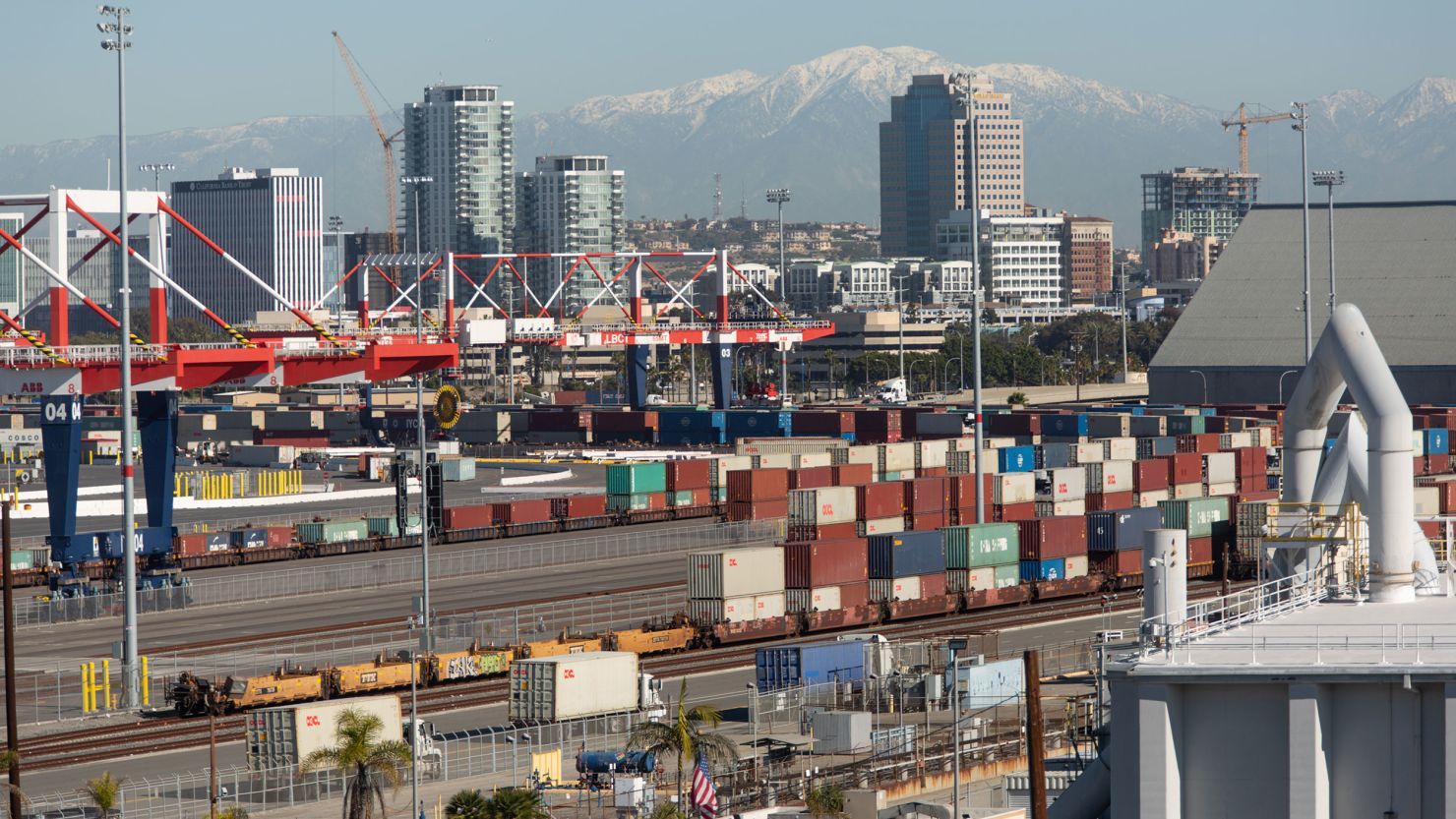States and local communities are ramping up plans to spend the billions of dollars provided by the Infrastructure Investment and Jobs Act that passed last year.
The law, enacted about 100 days ago,will provide $550 billion for new federal infrastructure investments over the next five years. Roughly a fifth of the pot will be available in 2022 for a variety of projects, including roads, bridges, rail, water systems, airports, broadband and public transit.
Passed with bipartisan support, the law marks one of the biggest wins for President Joe Biden. The administration, as well as members of Congress, are eager to show off the bridges, roads and other projects the federal money will help build.
There is a massive backlog of infrastructureneeds in the US awaiting funding, but it takes time to get projects off the ground. For the most part, money is still making its way to the states and local agencies for construction that could start in the spring.
The nation’s infrastructure system, which earned a C- score from the American Society of Civil Engineers last year, is in desperate need of money. About one-third of all bridges in the US need major repair work or replacement, according to a recent report from the American Road & Transportation Builders Association.
The collapse of a Pittsburgh bridge earlier this year – hours before Biden was scheduled to visit the city to tout the new law – has underscored the urgency.
How much money has gone out?
The White House said Wednesday that it has made about $100 billion available through a number of programs so far.
Some of the money is distributed through what’s known as formula programs, which deliver funds directly to states, and some money is available through competitive grant programs that require state and local agencies to apply.
Several funding programs have already launched, releasing billions of funds for highways, bridges and airports.
Using the infrastructure funds to strengthen the nation’s supply chains is a big priority for the Biden administration. One of the first announcements it made was about awarding more than $241 billionin grants to 25 port projects, including building a new locomotive facility in Long Beach, California, and the construction of an off-dock container support facility in Tacoma, Washington. The administration made another nearly $450 million available in grants for port improvements this month.
A formula funding program that will help states create a network of electric vehicle charging stations was opened by the departments of Transportation and Energy earlier this month. It will make $615 million available this fiscalyear and is set to disburse $5 billion over five years.
The Environmental Protection Agency recently announced it will use $1 billion for the cleanup and restoration of the Great Lakes region, with $200 million allocated for this year.
When will Americans see shovels in the ground?
It’s mostly up to the states and local agencies to decide how and when to spend the money – within the guidelines spelled out by the law.
“This is not a right now kind of deal,” said Mitch Landrieu, a former New Orleans mayor who was tapped by Biden to oversee the implementation of the infrastructure law.
In an interview with CNN Wednesday,Landrieu declined to outline a time frame for when Americans could see shovels in the ground.
“As soon as the states are ready, they can start. The answer is going to depend on how ready they are to move,” he said.
Funneling the billions of dollars to the states is a heavy lift that requires coordination from several agencies on the federal level with state-level officials. In January, Landrieu asked the states to name their own infrastructure coordinator to help ease the process. Twenty-five have done so to date, he said.
The administration has also launched an “infrastructure school” webinar series to help communities learn how to access the aid.
Simple projects, like paving a highway, could be the first kind of effort a state tackles. But other more complex projects, like building a new bridge, may not start for months – if not years.
“The good thing is, even if it does take a little bit longer, we’re getting started today instead of years from now,” said Elaine Nessle, executive director of the Coalition for America’s Gateways and Trade Corridors.
Many states have projects that they have been planning for years, just waiting for increased financial assistance.
“I thinkpublic agencies are ready to move forward. These projects are much more than just a twinkle in someone’s eye,” Nessle said.
A congressional holdup
Experts told CNN that the disbursement of the money is happening along the time frame they expected – except for one holdup.
Due to a budgeting quirk, some of the money provided by the infrastructure law cannot be spent until Congress passes the fiscal year 2022 appropriations bill. The federal government is currently funded by a stopgap bill known as a continuing resolution, though lawmakers are optimistic they can come to an agreement on a full-year funding package by March 11.
Still, that leaves some money “not yet spendable,” said Susan Howard, director of policy and government relations at the American Association of State Highway and Transportation Officials.
That includes a portion of the funds slated for the federal highway program and public transit programs.
“If we get too far down the road without a fiscal year spending package, we begin to risk projects being delayed,” Howard said.
There are other potential challenges ahead that Howard and the Bidenadministration are keeping an eye on. The rising costs of materials and labor could mean that the infrastructure dollars can’t be stretched as far as first expected. Not only are construction workers needed, but public agencies may alsoneed to hire more grant writers to apply for the funds.
The White House is also working to make sure the money is used efficientlyand to prevent fraud and abuse of the funds.




